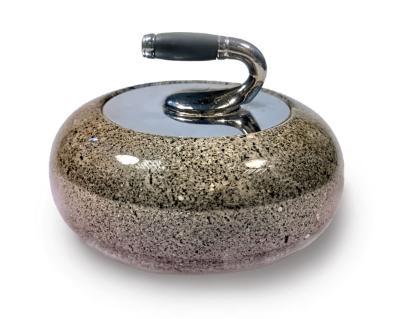A World Without Curling?
Object in Focus
From November 2021
Hunterian Museum
Admission free
 This Object in Focus display highlights the impact of climate change on the sport of curling and features three model curling stones made by Keys of Scotland. The model stones display the main varieties of granite used: red hone, blue hone and common green. All are from Ailsa Craig, a rocky island in the Clyde.
This Object in Focus display highlights the impact of climate change on the sport of curling and features three model curling stones made by Keys of Scotland. The model stones display the main varieties of granite used: red hone, blue hone and common green. All are from Ailsa Craig, a rocky island in the Clyde.
Curling developed in Scotland because of our natural climate. Most villages had curling ponds where strong ice many inches thick developed most winters, sometimes for months on end. From 1847 improved transport meant that Grand Matches, involving up to 5000 people, could take place on frozen lochs. Matches could require 10 or more hectares of ice at least 12-20 cm thick.
The frequency of outdoor matches has dramatically decreased with the last outdoors Grand Match taking place in 1979.

